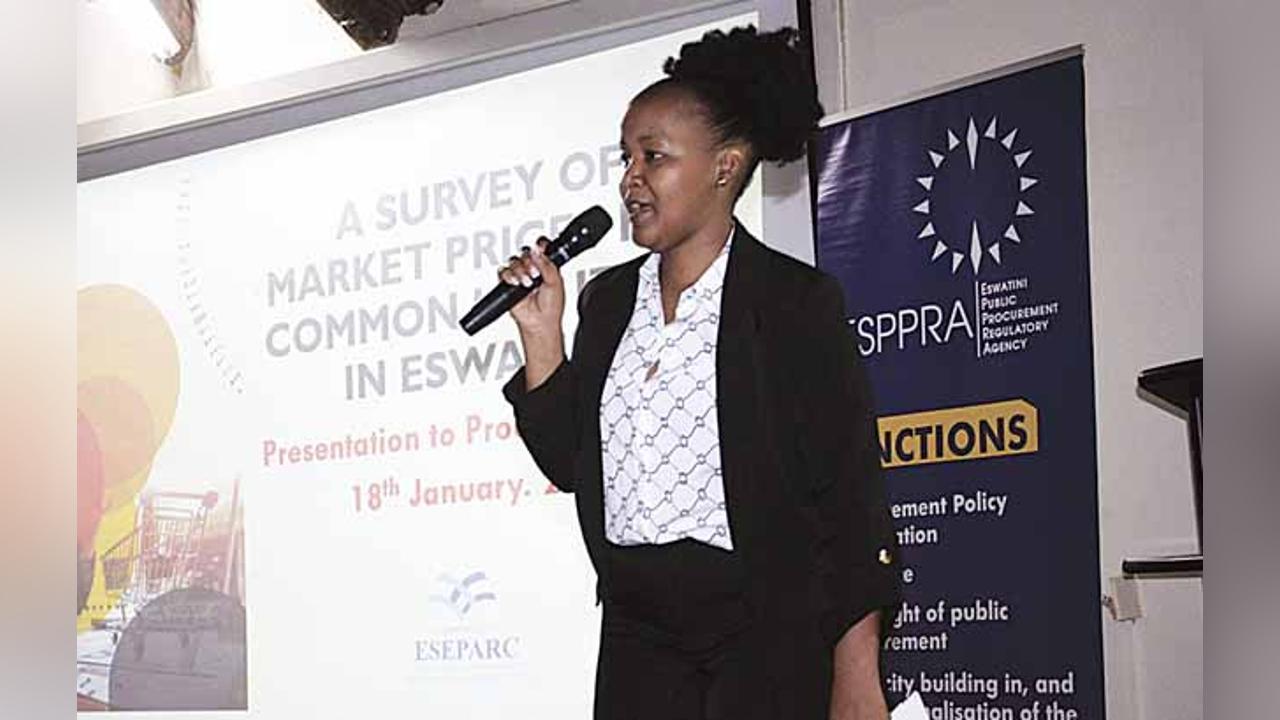Africa-Press – Eswatini. A recent survey by the Eswatini Economic and Policy Research Centre (ESEPARC) has shed light on the geographical distribution of economic activity.
ESEPARC revealed a clear concentration of business and commerce in the Manzini and Hhohho region, further citing that the Ngwenya-Matsapha-Manzini corridor emerged as a particularly vibrant economic hub.
The Survey of Market Prices for common use items was carried out in all four regions of the country.
The survey collected prices from 580 suppliers, with Hhohho and Manzini regions accounting for 79 per cent of those covered.
It indicated that the majority of economic activity took place particularly along the Ngwenya-Mbabane-Matsapha-Manzini corridor.
“It is not surprising that the majority of suppliers were located in these areas.
It is also worth noting that some vendors provided prices for multiple categories.
For example, one supplier, may provide cleaning supplies, protective clothing, and office furniture to procuring entities,” read the survey.
As a result, ESEPARC stated that the 580 suppliers observed included vendors who were counted more than once due to some categories in the Lubombo and Shiselweni region that recorded zero prices, either because the items were simply not supplied by the vendors or because there were no vendors in the region that supplied them.
Categories
“These categories include, Blinds and Curtaining, Cleaning Materials and Chemicals, Information and Communication Technology (ICT), Computer Consumables, Lubricants, Oils, and Greases, and Printing of Stationery.,” said ESEPARC.
It noted that the gap between the regions was worth further investigation to ascertain other
reasons why this is happening so that strategies can be employed to encourage suppliers in the region to participate in public procurement system.
The survey further revealed that price differences between suppliers were observed.
It stated the extent of price variations attributable to a number of factors as prices were collected from both retail outlets and businesses that bid for government tenders. It highlighted that prices of government suppliers who did not have any physical offices or retail spaces were higher than retail suppliers, since their customers are mainly the public.
Business
“The Law of One Price states that identical assets or commodities should have the same price no matter where they are, but this is not always true,” it further reveals.
Indicating that in reality however, each business factored its own costs of doing business, for example shipping, transaction fees, and tariffs, when setting their prices which resulted in the differences in the cost of doing business for one business to another.
The survey therefore stated that this led to the observed price variation.
“Classifying and describing common items posed a few challenges, as some suppliers found it difficult to comprehend or relate to the terminology (nomenclature) used to characterize each item or class of items.
This was particularly true for items under Building Materials, Electrical Materials, Computer Consumables, and Office Furniture,” it said,
ESEPARC’s Tengetile Hlophe, recommended that the country implement strategic approaches to attract suppliers to ensure sufficient competition for tenders.
“This could be achieved through nationwide awareness campaign with a particular emphasis on enlisting the participation of suppliers in the Lubombo and Shiselweni regions,” she said.
Hlophe further recommended the Implementation of regional procurement restrictions to ensure that procuring entities only procure in their region to increase economic activity in the Lubombo and Shiselweni regions.
For More News And Analysis About Eswatini Follow Africa-Press







